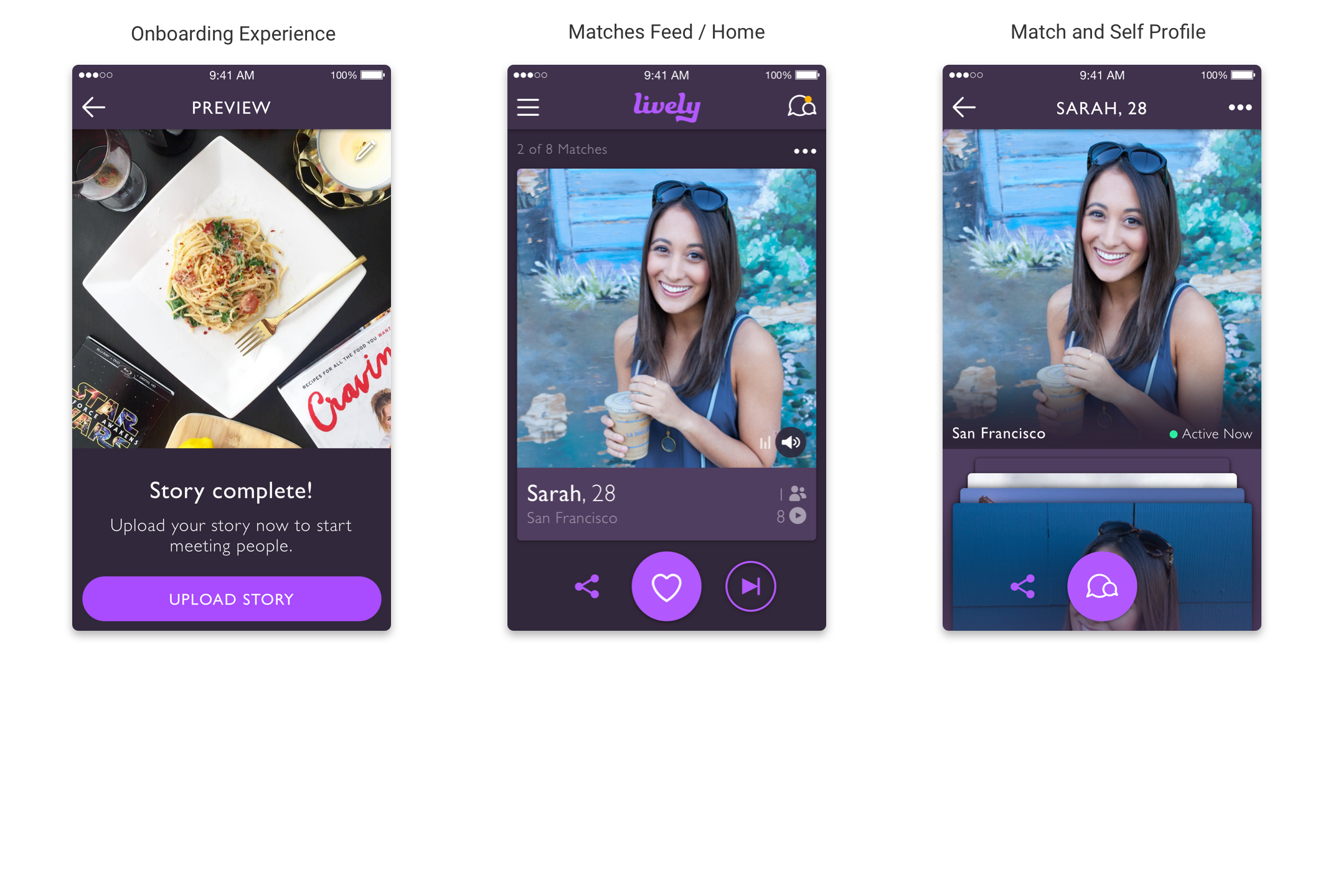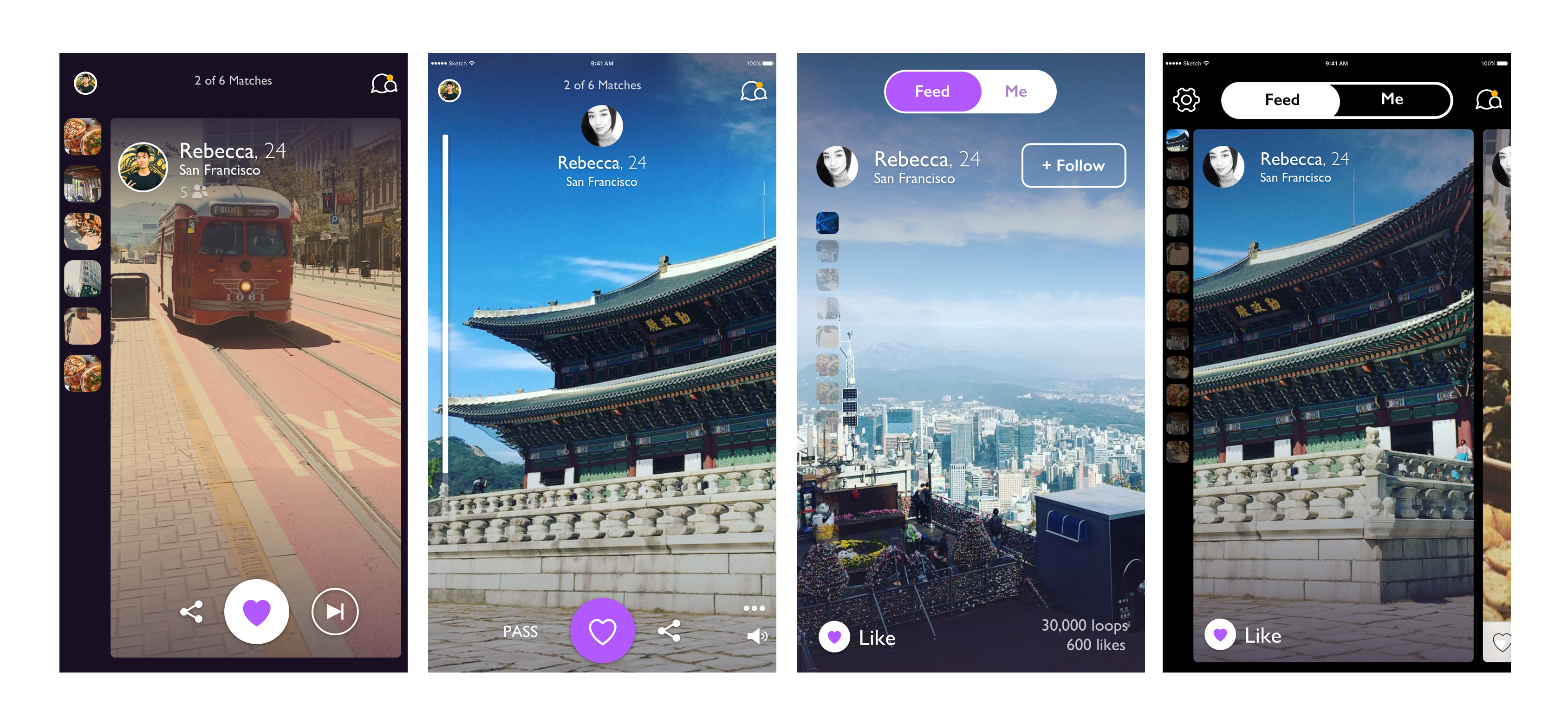Lively Redesign Case Study
Project Background:
Lively is a video dating app that Zoosk launched earlier this year. I worked on designing the v2 of Lively.
My Role and Timeline:
I was not the initial designer on v1 of Lively but I worked on v2 as the sole designer. The project timeline was 2 weeks.
Project Goals:
- ↳ Revamp home feed and all experiences to accommodate and emphasize vertical video.
- ↳ Design an experience that doesn't degrade old user videos uploaded in 1:1 aspect ratio.
- ↳ Making navigating between both profiles and individual profile content clear / intuitive for new users.
Project Tags and Software:
Define Project Objectives
Identify which screens and flows in the current app need to be updated based on project objectives.
The main task of the redesign was to accommodate vertical video throughout the app. The previous videos in the app were using an aspect ratio of 1:1.
Lively had launched prior to Snapchat Stories and Instagram Stories but the popularity of both apps is what inspired the Product team at Zoosk to integrate vertical video into the Lively app. Before making changes to the app screens we wanted to design an intentionally great user experience in Lively.

Lively Competitive Research
Researching and understanding the design of popular and similar apps can be a competitive advantage.
Instagram Stories Notes:
- ↳ Horizontal bar on the top of the profile "story" that indicate how many "moments" in a story. The bar also animates based on the length of each "moment"
- ↳ Auto scrolling to the next profile "story" after the previous profile "story" is completed.
- ↳ Horizontal scrolling list on top of home feed to indicate how many stories there are to watch
Snapchat Notes:
- ↳ Circular pie timer to indicate how moments there are in a person's "story"
- ↳ Recently removed auto playing next profile "story" after the previous profile "story" is completed.

Lively Design Iterations
After doing some research I spent some time creating some design iterations of the home screen.
I wanted to experiment with different layouts that had different approaches to navigating between profiles and content inside each profile.
Iteration #2:
- ↳ This mockup is an immersive full screen with a vertical scrollbar that animates based on the which moment in the story is being viewed. The pass button on this mockup is also suppressed.
- ↳ This mockup is somewhat of a combination between the first and second mockup. It is full screen but also has thumbnails on the let side of the screen to indicate the number of moments in the current profile being viewed. The pass button has been removed from this mockup.

Lively Prototypes
I created a prototype in Framer Classic with videos that played and made the prototype feel like a real app.
1. Video playback support:
- ↳ While I could have just focused on designing the UI in software such as Sketch or Figma, I decided to utilize Framer Classic's video playback functionality. Framer Classic is supported by framer.js a custom javascript library that allows for quick prototyping. Framer is built on top of the web which means a number of "features" are built in and straightforward.
- ↳ I enjoy using Framer Classic because it has a number of built in components such as the Page Component. This component allowed me to nest each video into a full screen page that was within a container that could be scrolled vertically or horizontally.

User Studies / Research
We conducted 15 user interviews in a span of 48 hours. Each interview was about 30 minutes.
